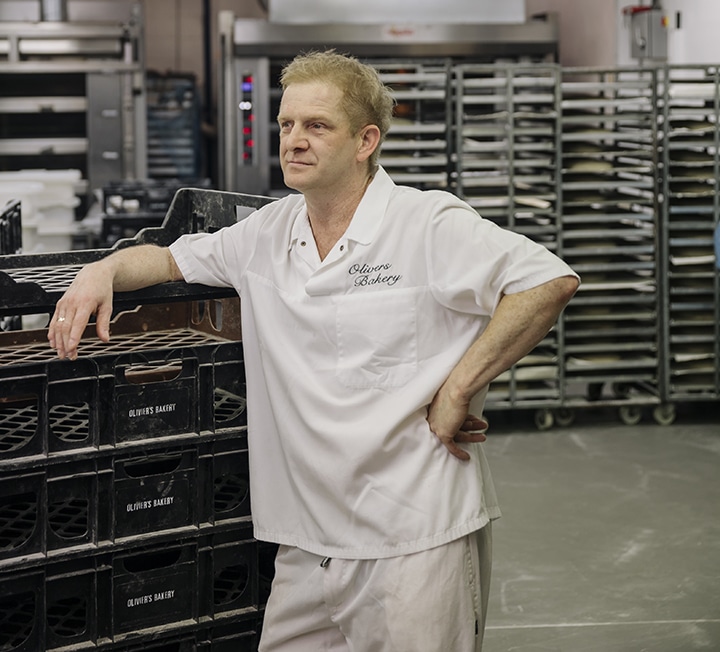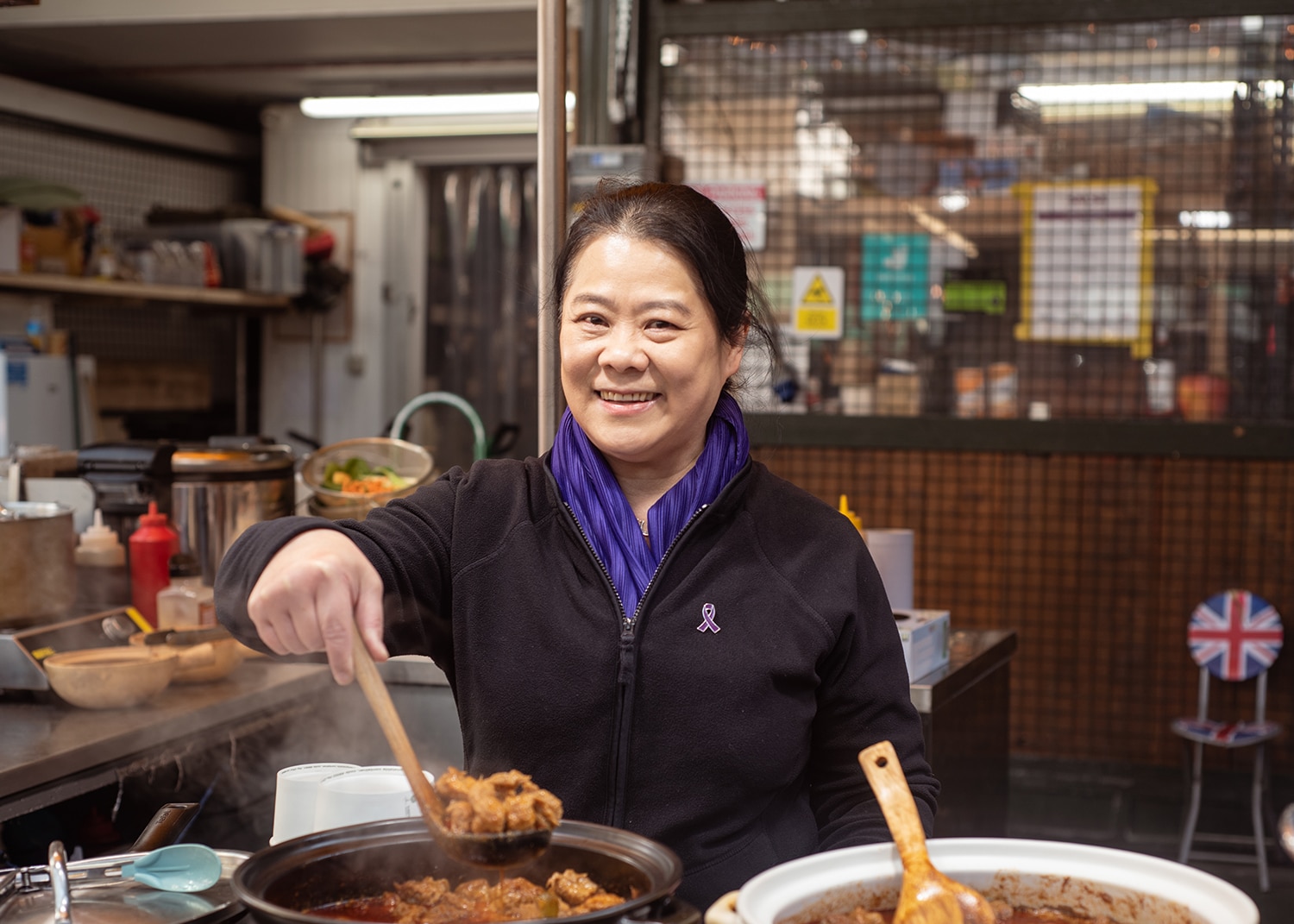The real food of love
With the help of Borough’s traders, Clare Finney, author of Hungry Heart, explores the deep connection between food and romance


“TRUE ROMANCE COMES FROM THE QUIET COMFORT OF KNOWING HOW AND WHY YOUR PARTNER ENJOYS A PARTICULAR DISH”
Words: Clare Finney
Another February, another flood of chocolate hearts, pink champagne and articles alternately rubbishing or revelling in the aphrodisiac qualities of oysters. Writing the ‘romance’ chapter of my book about food and love, Hungry Heart, I felt like Tom Cruise in Mission: Impossible, ducking, dodging and weaving past the lethal cliches.
The problem is, food and love are inextricable; not always, but often – even if it’s just that first hot drink of the day. Every morning my friend Emma needs strong coffee in a pale-yellow mug, and every morning her husband Rob makes it for her in the mug he meticulously washes up every evening. So demonstrative is this gesture of the depth of Rob’s affection, Emma’s dad referenced it in his speech at their wedding, noting what it said about his consistency and attention to detail.
Speaking to people within and outside the food world both for the book and since, I’ve been struck by the sheer variety of meals which, for someone somewhere, represent the height of romance. My best friend’s mum Angela shares a love of plane (yes, as in aeroplane) food with her husband John. “We get excited when the trolley comes. Then we go through our trays and say to each other: ‘Crackers – nice! Cheese – nice!’ while people are there with their bags of Pret and Wagamama’s. I don’t know why. I think it’s the togetherness of it,” she muses: the careful peeling back of the foil lid; the joint exclamations at the contents; and their ability to laugh at themselves.
Needless to say, none of the Borough Market traders I spoke to about food and romance referenced the meals you get on an aeroplane. Yet there are some common threads that run through the true food of love, whether it’s freshly prepared or in-flight. One of most obvious is realness – the quiet comfort of knowing your partner well enough to know how and why they enjoy a particular dish, and vice versa. I know this because for a long time, the opposite was true for me; there were countless nights out on which I would feign to like or dislike something in an effort to project the version of myself I thought my date would want.

I’ve chosen natural wine to prove I’m a foodie; suffered Pizza Hut to prove I’m not; faked a taste for foie gras, fruit cake, fermented cabbage, cask ale, cream cheese and caviar. In short, I’ve not always been ‘real’; and even before that lack of realness was evident in the relationship itself, it was evident in the meals we shared. By way of contrast, one of my favourite things to make for and enjoy with my boyfriend is Horlicks – and there is nothing cool, quirky or sexy about that.
So, when Cynthia Shanmugalingam of Rambutan says the food of love she shares with her husband is a chickpea salad with “whatever we have in the fridge”, I know hers is a real romance. “We make it all the time – like, maybe twice a week? – and it feels familiar,” she laughs. The pair, who married in Sri Lanka just weeks ago, fry chickpeas in cumin, coriander and chilli “then chop up whatever we have around, like cucumbers, herbs, pomegranate, red onion, persimmons, gem lettuce, radishes…” the list goes on. “It’s quick, easy and a good way to use up vegetables we bought in the market – and it feels like we’re looking after each other,” she says: another enduring theme when it comes to cooking, eating and love.
“I have been thinking about it so much lately,” says Marianna Kolokotroni of Oliveology. For her, the real food of love is just real food. “Food without unnecessary ingredients and health claims,” she says. Food of the kind she sources from Greece: artisanal olives, olive oils, honeys, nuts and cheese produced by real people in the same way they have been for centuries. “Food that keeps your body and mind healthy, but also brings you a lot of joy.” For Marianna, there is no love in food that does not nourish, emotionally as well as physically; and there also needs to be an abundance of love, as well as skill and time, in the way it is made.
The reason any of this matters is that meals are the fulcrum of the lives we share with the people we love – the steady beat to which our days, weeks, months and years play out. They’re the punctuation marks to life’s chaotic sentences. When I ask David Lockwood, director of Neal’s Yard Dairy, to describe a romantic meal, he tells me he’d buy coffee from Monmouth, smoked trout pâté from Oak & Smoke, seedy sourdough from Karaway Bakery and Appleby’s butter from Neal’s Yard, and make a long and lazy breakfast: “the kind of breakfast that gives you the chance to be comfortable together and to not worry. It’s cosy and warm.”
“I don’t think of myself as really such a romantic guy – but who knows, maybe I am?” he says – and I think maybe he is. I’ve found most people are, when they stop to think about what they eat with their loved ones. Because to understand the value of that first cup of coffee in the morning, of the comfortable routine of a regular, nourishing dish, of the pure happiness brought by a breakfast of good bread and butter, is to understand the value not just of meals, but of all that food can signify: simple pleasures, time spent together, the change in seasons, human ingenuity, discovery, familiarity, and love.
Clare Finney is the author of Hungry Heart: A Story of Food & Love (Quarto)


